Microsoft Ignite 2023: The Biggest News In Data, Cloud, Security
Microsoft Fabric, immersive Teams spaces and a unified platform of Microsoft Sentinel and Defender XDR were some of the biggest data, cloud and security news at Ignite 2023.
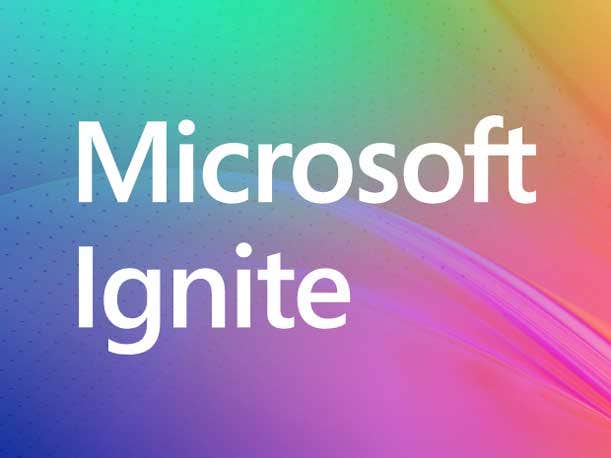
The general availability of Microsoft Fabric. Three-dimensional Teams spaces where users can roast marshmallows and throw beanbags. And a private preview for a unified security operations platform combining Microsoft Sentinel and Defender XDR—formerly known as Defender 365.
This is some of the biggest news in data, cloud and security to come out of the Redmond, Wash.-based tech giant’s annual Ignite conference, being held in Seattle and online this week.
Some of the main themes for the conference included new Microsoft tools for developers, more access to cutting-edge technology including generative artificial intelligence (GenAI) and mixed reality, and working more closely with rivals including Oracle and Amazon Web Services.
[RELATED: Microsoft Q1 2023 Earnings: CEO Nadella ‘Very Pleased’ With Early AI Rush]
Microsoft Ignite 2023 On Security, Cloud
Even though it is early days for the Fabric data analytics platform, Microsoft Chairman and CEO Satya Nadella revealed on the company’s latest quarterly earnings call that more than 16,000 customers actively use the platform, including more than 50 percent of the Fortune 500.
During Ignite, Microsoft also noted the opportunity for solution providers working with Fabric. Accenture and Capgemini have trained more than 4,200 individuals on the platform, according to the vendor.
For Teams, Nadella revealed that the collaboration application has more than 320 million monthly active users and its premium offering has more than 10,000 paid customers.
And for Sentinel, the CEO said that the cloud-native security information and event management (SIEM) tool now has more than 25,000 customers with revenue surpassing a $1 billion annual run rate.
Read on for more of the biggest unveilings at Ignite 2023.
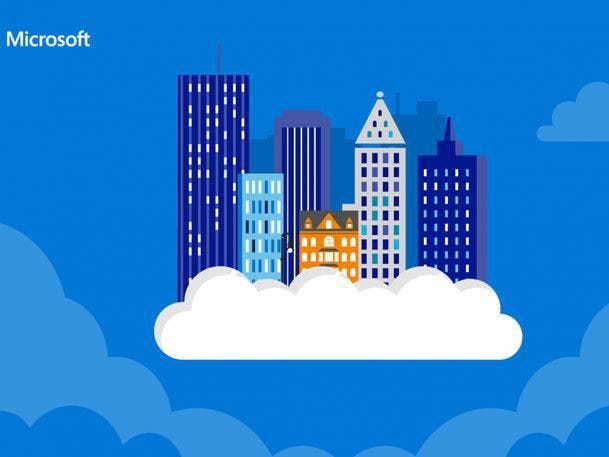
Azure Boost Goes GA
Microsoft has made its Azure Boost system GA, the vendor said during Ignite 2023.
Azure Boost promises to speed up storage and networking by moving those processes onto purpose-built hardware and software instead of host servers, according to Microsoft.
Microsoft said Boost allows for the fastest remote and local storage performances in the market with a remote storage performance of 12.5 Gbps throughput and 650K input/output operations per second (IOPS), and a local storage performance of 17.3 Gbps throughput and 3.8M IOPS.
Azure Boost also powers the Azure M-series Mv3 family for up to two times throughput to Azure premium solid-state drive (SSD) disk storage and up to 25 percent improvement in network throughput over Mv2, according to the vendor.
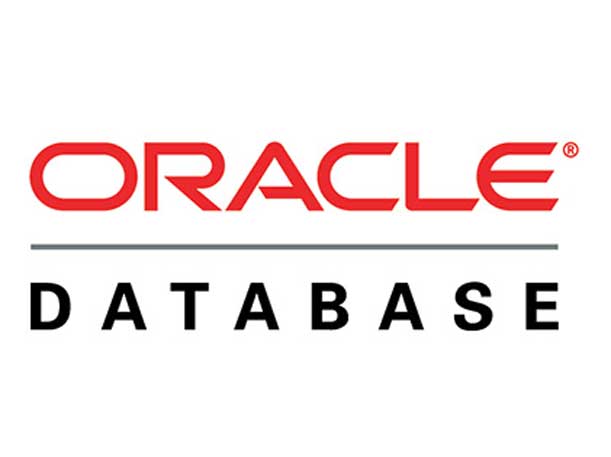
Oracle Database@Azure Goes GA
Oracle Database@Azure, an offering that gives users direct access to Oracle database services running on Oracle Cloud Infrastructure (OCI) deployed in Microsoft Azure data centers, will go GA for the U.S. East Azure region in December, according to Microsoft.
The offering promises to deliver all the performance, scale and workload availability advantages of Oracle Exadata Database Service on OCI combined with the security, flexibility and services of Microsoft Azure, according to Microsoft.
The vendors will expand to additional regions starting in the first quarter of 2024. Oracle Exadata Database Service is the first Oracle database service to benefit from the offering.
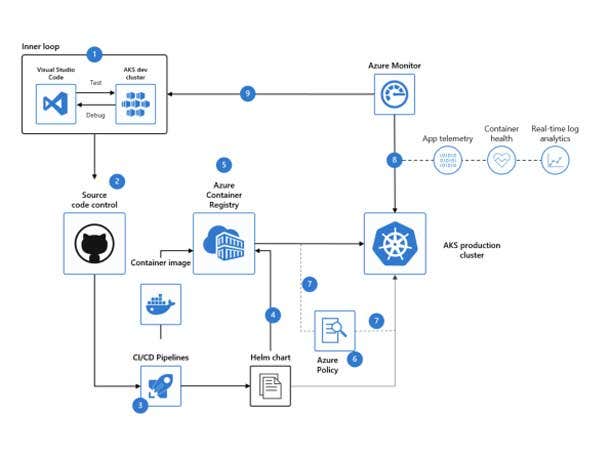
Azure Kubernetes Service Updates
Microsoft has made Azure Kubernetes Fleet Manager GA, allowing for multicluster and at-scale Azure Kubernetes Service (AKS) clusters scenarios.
Administrators can manage workload distribution on a global scale across clusters. Plus, they can facilitate platform and app updates, according to the vendor.
Confidential containers on AKS is in preview. This cloud service aims to provide pod-level isolation and memory encryption in a managed Kubernetes service based on the open-source Kata containers project.
In preview, AKS on VMware should give users the same AKS in the cloud and AKS on-premises experience in VMware environments, according to Microsoft.
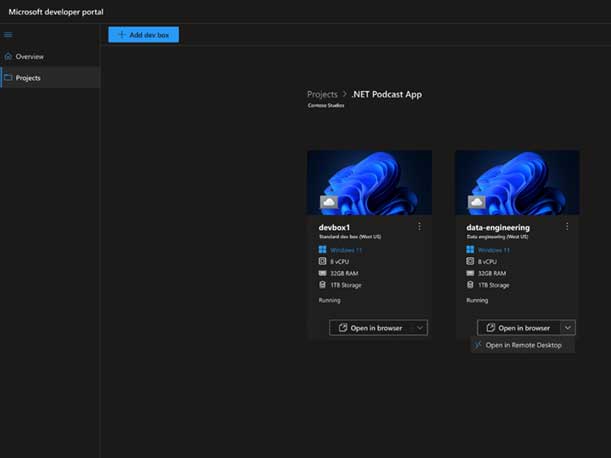
Microsoft Dev Box
New capabilities in preview for Microsoft Dev Box promises developers more granular control over images and the ability to connect to hosted networks, according to the vendor.
The capabilities also include templates to speed up getting started and the ability to limit the number of dev boxes each developer can create within a project to help manage costs and ensure efficient use of resources.
Docker now provides Dev Box-compatible preconfigured images on the Azure Marketplace that have everything needed to build containers with Visual Studio and Docker Desktop, according to Microsoft.
.NET 8
During Inspire 2023, Microsoft introduced .NET 8, with the goal of more performance and productivity for .NET developers.
Microsoft services that support .NET 8 include Azure Functions and Azure App Service for Linux and Windows. AKS and Azure Container Apps also support the new iteration of .NET.
Updates to Visual Studio and GitHub and Microsoft Dev Box enhancements should help developers take full advantage of .NET 8, according to Microsoft.
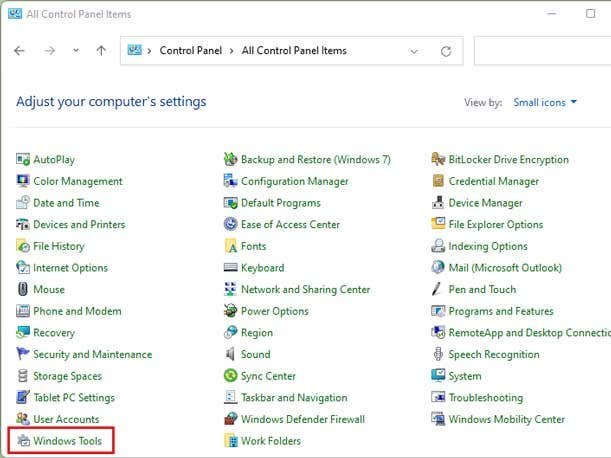
Windows Tools
Microsoft has launched a preview of Windows App, which connects users to Windows in the cloud from a device of choice across Windows 365 (W365), Azure Virtual Desktop, Remote Desktop, Remote Desktop Services, Microsoft Dev Box and more.
W365 users can preview new GPU support for graphics design, rendering, 3-D modeling, data processing, visualization apps and other workloads, according to Microsoft. W365 is also now available in a 16vCore offering for high-capacity computing.
In private preview is Windows Autopatch firmware and driver update management granular controls, with third-party app support possible in the future.
In public preview is W365 Customer Lockbox to help block Microsoft support engineers from accessing content to do service operations without explicit approval.
Another public preview is MSIX app attach assignment flexibility in AVD. This enables the installation of modern apps on any session host, per user, without needing a maintenance window or session interruption.
Coming soon to public preview is W365 Customer Managed Keys, which allow for encrypting W365 Cloud PC disks with a user’s own encryption keys.
W365 and AVD now have single-sign on (SSO) and passwordless authentication support and third-party IDP support. Microsoft is “actively working” to bring the same capabilities for AVD-approved providers.
Now GA in W365 and AVD is watermarking, screen capture protection and tamper protection support.
AVD Personal Desktop Autoscale is GA. With this, users can automatically start session host VMs according to a schedule or using Start VM on Connect and then deallocate or hibernate session host VMs based on the user session state.
Windows Autopatch for frontline workers is GA and included in Microsoft 365 F3 subscriptions. Microsoft will also unify Windows Update for Business and Autopatch into a single solution for PC update management.
Microsoft also added 500 hours of Test Base for Microsoft 365 use without expiration for Windows Enterprise E3, Windows Enterprise E5, M365 E3 and M365 E5 users. Users can leverage this offering for testing apps against Windows 11.
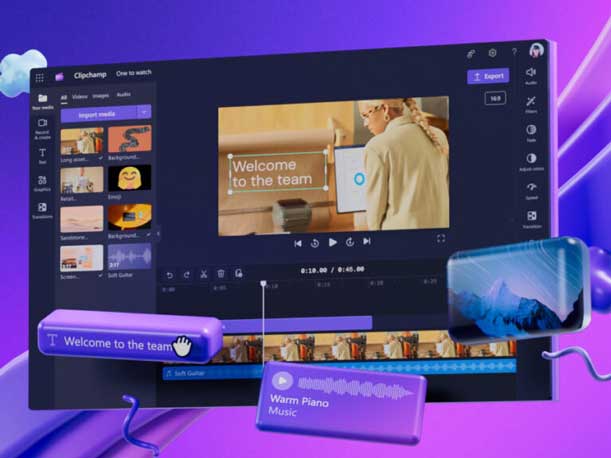
Microsoft Clipchamp, Designer
Microsoft 365 Enterprise and Business suites now have access to the Clipchamp video editor.
Premium features for Clipchamp will launch in December, including 4K exports, organization brand kit capabilities and premium stock content such as audio, video and graphics.
A stand-alone license for Clipchamp outside of M365 will also become available.
A preview of the Designer image creator app is coming, according to Microsoft. It will go GA later in 2024. And the vendor is at work integrating Designer in various M365 apps.
In the coming weeks, Teams users can leverage Designer to make announcement banners. Copilot in Microsoft Designer for Word, PowerPoint and Whiteboard will be available by the end of 2023.
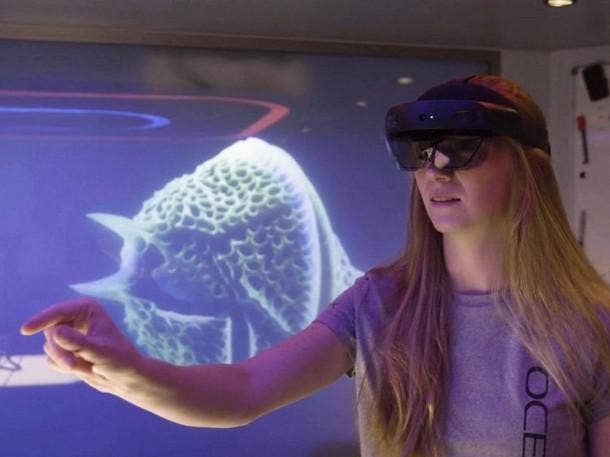
Microsoft Mesh, Teams Immersive Spaces
Microsoft’s Mesh 3-D immersive experience will become GA in January, according to the vendor.
Users will have the ability to experience Mesh with PCs or Meta Quest virtual reality devices, according to Microsoft.
Users can leverage Mesh to build spaces for employee events, training, guided tours, product showcases and other scenarios with a no-code editor.
Event organizers will have the ability to conduct question-and-answer sessions, see a list of hands raised in order and call on participants, whom everyone in the event can hear.
Mesh will power the Microsoft Teams immersive spaces feature that goes GA in January. Immersive spaces will include custom avatars, spatial audio and audio zones and spaces to roast marshmallows, throw beanbags, answer icebreaker questions and more.
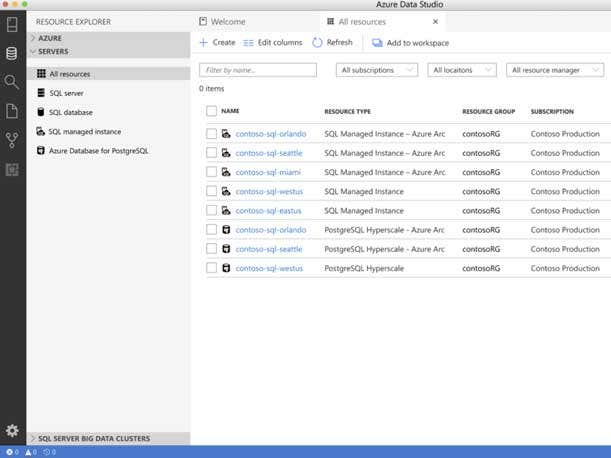
Azure Arc
During Ignite 2023, Microsoft said that VMware vSphere enabled by Azure Arc is now GA.
The offering promises developers the ability to use Azure technologies with their existing server-based workloads and new Kubernetes workloads.
Microsoft also revealed a preview of Azure IoT Operations enabled by Azure Arc. The offering should allow users to reduce the complexity and time for building services for near-real-time decisions backed by AI-driven insight for agile, resilient and sustainable operations with Microsoft and partner technologies, according to Microsoft.
In preview is monitoring for SQL Server enabled by Azure Arc, which promises insight into an entire SQL Server estate across on-premises data center and the cloud, for better database performance and faster problem diagnosis.
Now GA is System Center Virtual Machine Manager (SCVMM) self-service capabilities in Azure with Azure Arc. Users can manage and control VM environments on Azure and perform VM self-service operations from the Azure portal.
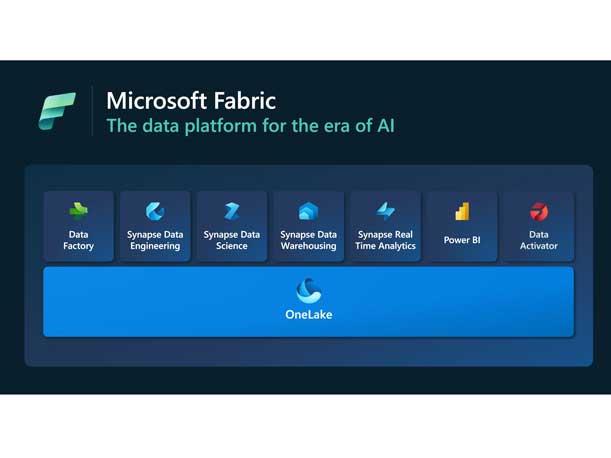
Microsoft Fabric
Microsoft has made its Fabric analytics platform GA for purchase, with pricing plans around capacity, storage and with hourly or monthly pay-as-you-go models.
The vendor also noted Fabric as an opportunity for services partners, with Accenture and Capgemini training more than 4,200 individuals on the platform.
“Our Microsoft engineering team worked closely with these partners to enhance their capacity and capabilities on Microsoft Fabric, ensuring the successful delivery of customer implementations,” according to Microsoft. “With the surge of customer demand for Microsoft Fabric, many partners have already completed the first wave of pilot projects during Fabric’s preview—helping customers unlock the early potential of Fabric.”
A free trial of Fabric is available, with users getting 64 capacity units (CUs)—the billing unit—to use against any workload for 60 days.
For Fabric skilling, Microsoft will launch the Microsoft Certified: Fabric Analytics Engineer Associate certification. The beta Exam DP600: Implementing Analytics Solutions Using Microsoft Fabric is expected in mid-January.
New Microsoft Applied Skills credentials are coming soon for Fabric scenarios.
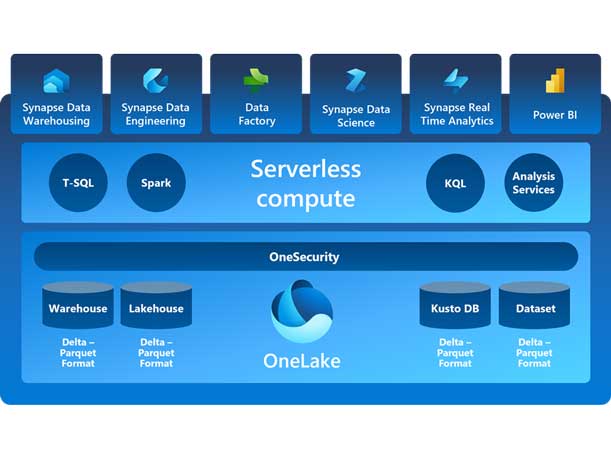
Fabric Integrations
Microsoft also unveil more integration between Fabric and Purview, allowing for manual application of Purview Information Protection sensitivity labels to classify sensitive Fabric data.
Purview’s Sensitive Information Types (SIT)-based data loss prevention (DLP) policies are now infused into Fabric. Also, every Fabric instance will auto-attach to a preview version of Microsoft Purview, and Fabric artifacts now flow into the Microsoft Purview data catalog.
In public preview is Purview Hub, a centralized page with insight into item inventory, sensitive data and endorsement.
Microsoft has made GA shortcuts for OneLake, Azure Data Lake Storage Gen2, Amazon S3 and Microsoft Dataverse, allowing users to virtualize data in OneLake without having to move and duplicate the data.
The vendor also added a “link to Microsoft Fabric” feature in Power Apps to help low-code app builders.
Mirroring is a new feature for Fabric users to add and manage existing cloud data warehouses and databases in Synapse Data Warehouse. Mirroring works with Azure Cosmos DB, Azure SQL DB, Snowflake and MongoDB, with more data sources coming in 2024.
Fabric also has native integration into Microsoft Graph, simplifying analysis with data from Teams, Outlook, SharePoint, Viva Insights and more, according to Microsoft. M365 data used to only be offered in JSON. Now, users can natively integrate that data to OneLake in Delta Parquet.
Direct Lake mode in Power BI is now GA, speeding up real-time data connection. Direct Lake has also been expanded to support Power BI semantic models on Fabric Warehouses. In public preview is support for stored credentials for Direct Lake semantic models, according to Microsoft.
OneLake has a public preview feature called Explore that aims to help users create a matrix or visual view on the fly for semantic models like PivotTables in Excel.
Microsoft launched a public preview of DAX Query View in Power BI Desktop for faster querying.
Fabric is also now part of the Microsoft Intelligent Data Platform (MIDP).
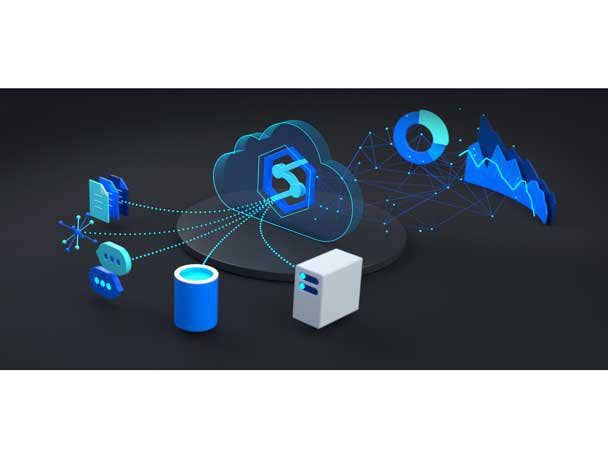
End Of Azure Synapse Analytics?
With Microsoft Fabric, the vendor has now teased an eventual end of Azure Synapse Analytics.
“Rest assured; we have no current plans to retire Azure Synapse Analytics,” according to the vendor. “We will continue to fully support the PaaS Azure Synapse Analytics product and our customers, fix product bugs, and make no compromises to the security of this platform. Customers can continue to deploy, operate, and expand Azure Synapse Analytics.”
The vendor continued: “Should these plans change, Microsoft will provide you with advanced notice and adhere to the support commitments in our Modern Lifecycle Policy to ensure our customers’ needs are met.”
Microsoft has an online guide for Synapse users to migrate workloads to Fabric.
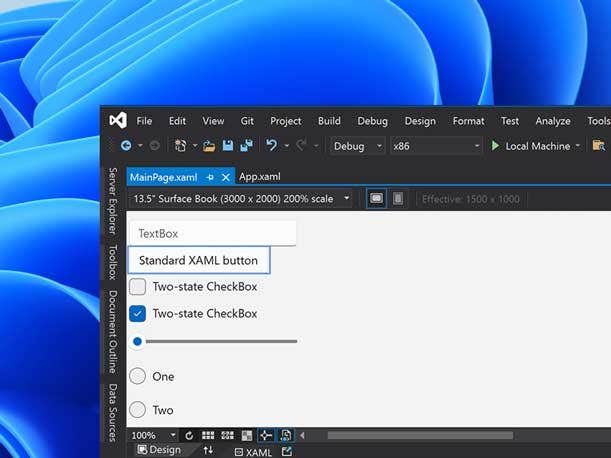
Windows For Developers
Microsoft has released Dev Home v0.7 with Azure DevOps (ADO) support.
This offering is powered by a new Dev Home Azure extension used for cloning Azure repositories.
Users can pin ADO widgets to display query results and query tiles to provide glanceable information for projects. And organizations can use Dev Home to on-board new employees and projects faster, according to Microsoft.
Meanwhile, Windows Subsystem for Linux (WSL) has been updated with enhanced security and simpler deployment, according to Microsoft.
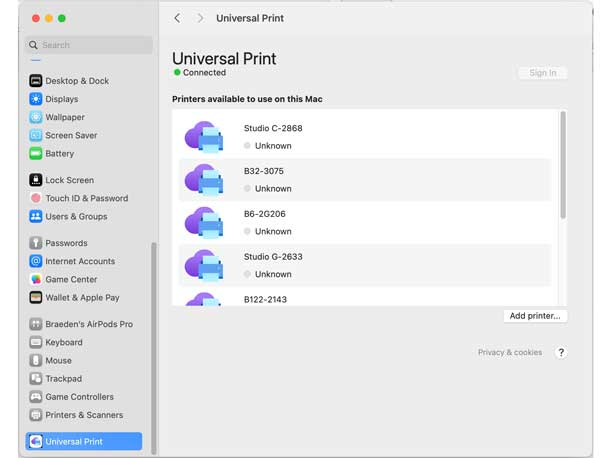
Universal Print Updates
Microsoft has a public preview for Universal Print macOS device support.
A pull printing feature is in preview, allowing users to print from any device or app, go to any corporate printer and securely release the print job without having to choose the printer beforehand. Users also get the option to use a mobile device or PIN code for authentication.
Microsoft also added new columns to the printer’s “print jobs” page in the Universal Print portal with information on how the print job traverses through different stages.
The vendor will publish more guidance meant to help print administrators troubleshoot common print issues before reaching out to support.
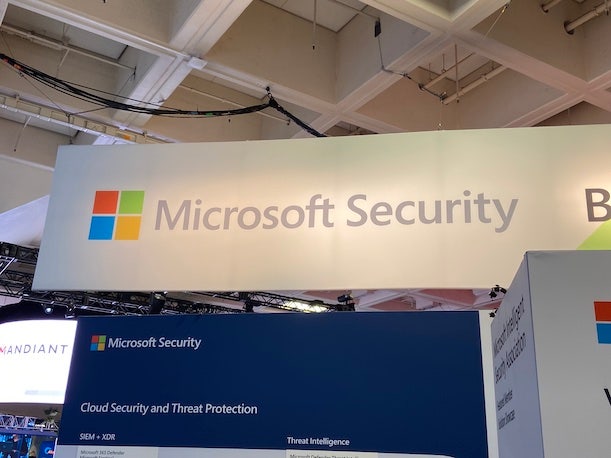
Unified Security Operations Platform
Microsoft has a private preview available for a unified security operations platform that combines Sentinel, Defender XDR and Microsoft Security Copilot. The platform is expected to enter public preview next year.
This platform has a unified incident experience for triaging, with a view of threats across the digital estate. Users have a single set of automation rules and playbooks powered by GenAI and the ability to query all SIEM and extended detection and response (XDR) data in one place to find threats and take remediation actions.
Users can ask Copilot in natural language to analyze malicious scripts or craft Kusto Query Language (KQL) queries to hunt across data in Microsoft Sentinel and Defender XDR, for example, according to the vendor.
Users can also instantly generate an incident report that summarizes an investigation and the remediation actions that were taken. The platform works on SAP signals and alerts.
New Defender for Endpoint deception capabilities promise to automatically generate authentic-looking decoys and lures to entice attackers with fake, valuable assets. These assets should deliver high-confidence, early stage signals to a Security Operations Center and trigger automatic attack disruption faster.
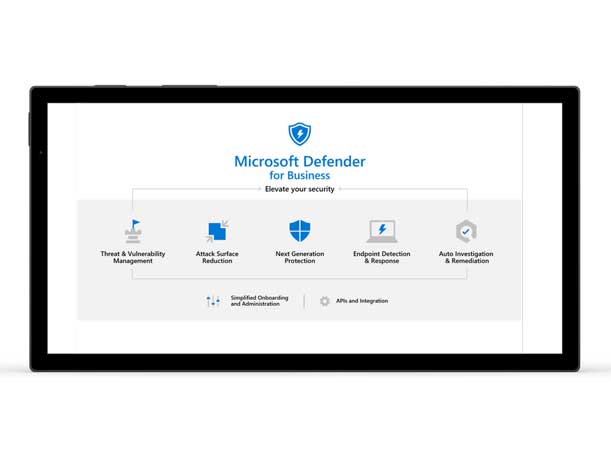
More Security Updates
Microsoft will expand Defender for Cloud Apps’ discovery capabilities to support more than 400 GenAI apps, the vendor said during Ignite 2023.
Purview has gained new ways to secure data in Microsoft Copilot and non-Microsoft AI applications. Users gain visibility into risks associated with sensitive data use and user activity context in AI applications. They also get compliance controls to help meet business and regulatory requirements, according to Microsoft.
Microsoft has a public preview of a Defender for Cloud integration with Microsoft Entra Permissions Management, which allows users to apply the least privilege principle for cloud resources.
Users can also see links between access permissions and potential vulnerabilities across Azure, Amazon Web Services and Google Cloud.
Another public preview is for a GitLab Ultimate integration that provides a view of application security posture and promises to simplify code-to-cloud remediation workflows across GitHub, Azure DevOps, GitLab within Defender for Cloud and other major developer platforms
Intune Suite adds three new capabilities in February, with the capabilities coming to Government Community Cloud in March. One capability is Microsoft Cloud PKI, which offers a cloud-based public key infrastructure and certificate management for authentication, Wi-Fi and VPN endpoint scenarios.
Microsoft Intune Enterprise Application Management marries third-party app discovery, packaging, deployment and updates with a secure enterprise catalog, according to the vendor. And Microsoft Intune Advanced Analytics promises to expand Intune Suite’s anomaly detection with deep device data insight and battery health scoring.